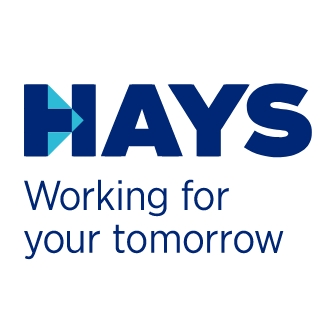Why Content-as-a-Service (CaaS) Is Your Best Bet to Unlock Incredible Digital Experiences?
With Content-as-a-Service (CaaS) model in place, enterprises can ensure that relevant content is delivered across every channel (web, mobile, and social), device (wearable, smart kiosks, and other IoT devices), and physical store. The service-oriented approach in CaaS makes the seamless experience and consistent content a quick possibility. Content can be demanded and consumed as and when required overcloud/web services.

The relentless diversification of customer-facing digital touchpoints—such as IoT devices, smart connected devices, and conversational interfaces— is compelling enterprises to rethink their digital experience strategy. It’s now a new ball-game altogether as customers demand a consistent brand experience— whenever and wherever they engage with your brand. But, given the steep competition in the market, the fragmentation of audiences, the recent demographic developments, and the complexity of bridging digital and physical world, showing relevant and personalized content is becoming the need of the hour for inspiring better digital experiences. In the future, the experience is going to be driven by content.
However, enterprises are still limited by traditional content management capabilities in their digital commerce platforms. Although digital commerce and Web Content Management (WCM) platforms are used in sync, their content management capabilities are limited in personalizing sophisticated content and reusing it across channels. Additionally, when businesses tap into more channels, their different systems generate content in silos, which leads to further fragmentation and platform complexity. As a result, it makes things complicated in delivering full business values to customers.
CaaS: The key to excellent content management
With Content-as-a-Service (CaaS) model in place, enterprises can ensure that relevant content is delivered across every channel (web, mobile, and social), device (wearable, smart kiosks, and other IoT devices), and physical store. The service-oriented approach in CaaS makes the seamless experience and consistent content a quick possibility. Content can be demanded and consumed as and when required overcloud/web services.
The CaaS system, however, does not manage the look and feel of the content and is not made for raw/direct human consumption. It simplifies the management of the raw, structured content in a unified repository. CaaS creates, manages, and delivers content via a headless approach, usually an API-oriented architecture (RESTful API in JSON format), with a decoupled presentation layer. The content can be accessed on-demand by both front-end and back-end users. The content reaches the developers through APIs where it is shaped for the presentation tier, which can be published (in the desired format) on any customer touchpoint or channel - a website, a mobile app, or a feed into a device’s interface.
Why should you go for CaaS?
CaaS offers more freedom and flexibility to the content and UI teams who can design custom experiences without the limitation of any display configuration. With this added freedom, content becomes more scalable and versatile. It further eliminates the need for costly integrations, all the while providing agility and allowing the efficient and quick addition of new channels.
Unlike traditional WCM platforms, CaaS fits into the omnichannel spectrum. Where WCM facilitates transactions mainly at a web-based point of sale (PoS), CaaS enables you to make consistent, enriched content available throughout various touchpoints. It enables you to conjure experiences that are far more immersive and engaging and lead to increased conversions.
CaaS provides you with a single source of truth that can be considered as a content reservoir and used across all channels in respective formats. This property is of utmost significance in digital commerce since companies need content that is appropriately structured but not hardcoded to specific syntax standards. Having CaaS would maintain consistency across touchpoints without losing the flavor of personalized contextualization. Content would be delivered dynamically and not just as a static, one-standard-size format. Adoption of CaaS moves digital commerce websites away from a page-centric model of engagement to a content-centric model, thus eliminating the need to adapt content from one channel format to another.

Here is how CaaS can facilitate your digital commerce operation:
- Optimize content vis-à-vis your channels
Since CaaS doesn’t have a hard-coded content structure, it can be molded and used for different channels simultaneously with minimal efforts. CaaS allows brands to be on their heels at all times with the ability to swiftly and consistently deploy content to a multitude of channels whenever necessary in real-time. With a unified content hub, optimized content can be launched for any channel.
CaaS is essentially pivotal in realizing the most important requirements of the digital era – personalization of content that is disseminated to different target groups. Thus, one can enhance and improve even the existing digital commerce channels without rebuilding them.
- Eliminate experience fragmentation
In a traditional digital commerce operation, content for different channels is typically placed in silos. Not only does this add to the complexity of system administration, but it also increases the chance that your customers are faced with a fragmented, uncoordinated brand experience. CaaS gets around this by consolidating multiple content silos for a brand in a single, cross-channel service. This means that whenever new content is created, it will then be dynamically delivered on request across all channels.
- Simplify distribution
Content can easily be distributed to your existing application stack since it delivers content without any layout to any channel. Introducing new data points, updating information on channels, product information management (PIM), and CaaS greatly facilitate the holistic supervision of content across the system. The solution provides fast response times and convenient expansion of content to new channels without perturbing continuity or consistency phenomenon.
- Unlock Full Creativity
When content needs to be circulated across devices of different interfaces (mobile v/s web), traditional WCM platforms restrict the creativity of design and layout. CaaS, however, helps you deploy lightweight WCM capabilities alongside existing platforms, such as a digital experience platform (DXP). Empowered by such freedom, you can innovate your customer experiences with relevant messaging and design. This, in turn, would lead to high conversion rates, customer loyalty, and increased brand attractiveness.
- Improve testing and publishing capability
Another distinct benefit of shifting to CaaS is the unprecedented independence to experiment with content and test different versions before putting it across any channel. This way, you can measure content effectiveness beforehand and ensure maximum impact on the audience. It also allows you to quickly roll out best content combinations across channels and geographies for timely user engagement.
- Accelerate campaign rollouts
CaaS uncannily empowers UI developers. The head-lessness of content creation from the presentation tier means off-the-shelf features and complex front-end experiences do not even restrict developers. Since it latches along with WCM, only the content architecture and configuration need to be built. This significantly reduces the development and testing iteration cycles of your time-to-market. CaaS, therefore, helps in scaling and executing new digital commerce initiatives faster.
The content management of the future
Organizations need to deliver a consistent experience with their content for sales support, digital/in-store experience (B2B2C), social platforms, native apps, mobile devices, conversational commerce, AR/VR, and more. CaaS proves to be a feasible solution to this problem. You can drive consistency and enhance customer experiences as part of this API-oriented approach. Moreover, CaaS integrated alongside PIM and WCM creates a comprehensive eCommerce solution that can be used for B2B, B2C, and even B2B2C environments. In time, this technology is poised to create a seismic shift in the commerce sector paradigm.
Artikel von Rahul Singh
Blog ansehen
A sound MDM solution can help supply-chain managers to achieve data completeness, consistency, coher ...

Today, accurate and consistent product data drives sales and generates revenue. It also adds value t ...

Data and analytics are the foundation of any digital transformation initiative. Every organization t ...
Diese Stellen könnten Sie interessieren
-

Sicherheitsmitarbeiter (m/w/d) - In 3 Minuten erfolgreich bewerben
Gefunden in: Hokify B AT C2 - vor 1 Woche
ISS Facility Services GmbH Orth an der Donau, Österreich GanztagsANX 18151 · SICHERHEITSMITARBEITER (M/W/D) · 40 WOCHENSTUNDEN · 2304 Orth an der Donau · 40 Wochenstunden · ehestmöglich · Securitiy Services / Empfang · In der Position als Sicherheitsmitarbeiter (m/w/d) sind Sie für die Sicherheit bei unserem Großobjekt in Orth an der Donau zus ...
-
Allgemeinmedizinerin bzw. Allgemeinmediziner an der Abteilung für Chirurgie
Gefunden in: Talent AT C2 - vor 4 Tagen
NÖ Landesgesundheitsagentu Gmünd, Österreich Voll/NebenberuflichFür das Landesklinikum Gmünd-Waidhofen/Thaya-Zwettl, Standort Gmünd suchen wir mit sofortiger Wirkung eine Allgemeinmedizinerin bzw. einen Allgemeinmediziner an der chirurgischen Abteilung mit Voll- oder Teilzeitbeschäftigung Unser Angebot: eine abwechslungsreiche Tätigkeit i ...
-

Project Engineer Support
Gefunden in: beBee S2 AT - vor 4 Tagen
Hays Professional Solutions Hamburg, Österreich GanztagsUnterstützung bei Einführung von Neuteilen und Komplettprodukten in die Serie · Nutzung vom Autoliv Product Lifecycle Management System (PLM), sowie der Tools Visible Planning, e-APDS & Plattform Organisation · Pflege von kundeneignen IT-Systemen · Unterstützung bei der Entwicklu ...

Kommentare